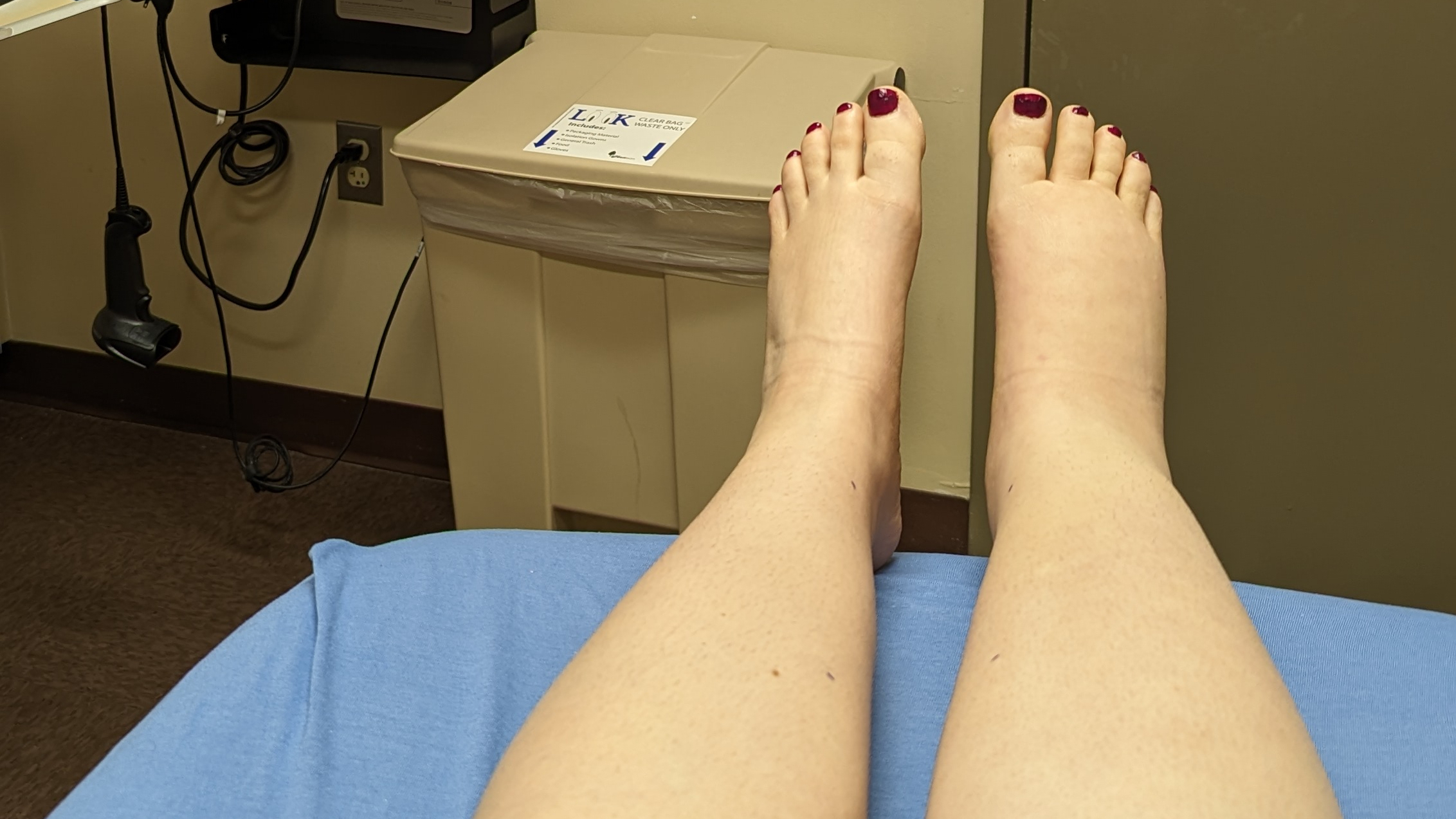There’s always something going on in the world of lymphedema and lymphatic research! It can be a lot to keep up with, so here’s a digest of some of the latest headlines from the past few weeks carefully curated to keep you in the lymphie loop.
“New Method of Analysing Lymphoedema: Münster Researchers Develop a New Diagnostic Imaging Technique for Lymphoedema”
Researchers at the Cells-in-Motion Cluster of Excellence at the University of Münster and at the Max Planck Institute for Molecular Biomedicine in Münster have developed a new method to analyze tissue, specifically in the case of lymphedema.
Traditional histological analyses involve tissue samples sliced into sections, with each individual section then observed two-dimensionally. The new method (called VIPAR) uses a special programming system called Voreen to assemble the individual optical sections on the computer and reconstruct the tissue structure in 3D.
The digital three-dimensional histopathology creates 3D images of blood and lymphatic vessels, and will help analyze the underlying changes that occur with lymphedema in a more detailed way.
READ THE FULL ARTICLE AT MYSCIENCE.DE.
“Tattoo Ink May Stain Your Lymph Nodes”
A recently published study by scientists from Germany and the ESRF, the European Synchrotron, Grenoble (France), have found that elements from tattoo ink circulate inside the body’s immune system and stain lymph nodes.
Scientists already knew that pigments from tattoo ink traveled to the lymph nodes by observing the visual evidence of the stained nodes, however this study marks the first time researchers have found analytical evidence of the transport of these micro- and nano-particles through the immune system.
In addition to organic pigments that stain the lymph nodes, tattoo inks also contain preservatives and contaminants: researchers found elevated amounts of nickel, chromium, manganese, cobalt, aluminum, iron, copper, and titanium dioxide in the lymph nodes and skin of their tattooed study subjects. In the lymph nodes of two of the study’s subjects, the highly toxic elements cadmium and mercury were detected.
This contamination may lead to chronic enlargement of lymph nodes and lifelong exposure to potentially toxic compounds, although follow-up testing is required to know for sure what the long-term health effects are.
“When someone wants to get a tattoo, they are often very careful in choosing a parlor where they use sterile needles that haven’t been used previously,” said Hiram Castillo-Michel, one of the study’s authors. “No one checks the chemical composition of the colors, but our study shows that maybe they should.”
READ THE ARTICLE AT SMITHSONIAN MAGAZINE; FURTHER READING AT PHYS.ORG.
“Lymph-node dissection increases rates of regional disease control”
A multi-institutional, prospective, randomized phase 3 study suggests lymph node dissection is not the only option for melanoma patients with sentinel lymph node metastasis, nor is it necessairily the best option, either.
This may seem counterintuitive to many patients and their doctors, but the study found that patients will likely fare just as well with the less invasive sentinel node biopsy as they do with the lymph node dissection in terms of removing the disease, all the while avoiding the surgical complications of a lymph node dissection (specifically lymphedema).
Complete node dissection remains a reasonable option for patients, and patients will always be the ones to make the final decision to have surgery or not. However, information like this may help them assess the risks and make the decision that’s best for them.
READ THE FULL ARTICLE AT DERMATOLOGY TIMES.
The following video is not affiliated with the above study yet serves as an explanation of sentinel lymph node biopsy procedure for patients with melanoma on their head or neck:
“In Treating Breast Cancer, Less Can Be As Good As More”
A group of researchers from Cedars-Sinai Medical Center in Los Angeles investigated whether routine use of axillary lymph node dissection was necessary among women with stage I or II invasive breast cancer and sentinel node metastasis.
Their data showed that women with a specific tumor biology (clinical T1 or T2 primary breast cancers) who had undergone sentinel lymph node dissection had virtually the same overall survival rates ten years post-surgery as those who had axillary lymph node dissection, but without the additional complications of lymphedema, numbness, axillary web syndrome, and decreased upper-extremity range of motion associated with axillary lymph node dissection.
“The long-term outcome of this study provides additional support that axillary dissection is not necessary for long-term disease control and survival for patients with positive sentinel nodes, even for those with generally late recurring hormone receptor-positive tumors,” wrote Dr. Armando E. Giuliano and his colleagues from the department of surgery at Cedars-Sinai Medical Center.
READ THE FULL ARTICLE AT THE AMERICAN COUNCIL ON SCIENCE AND HEALTH; ADDITIONAL READING AT HEALIO.COM.
Other news
A note from The Lymphie Life: Although not explicitly related to lymphedema or lymphatic disease, some medical news and research breakthroughs may still be relevant to members of the lymphedema community or have potential applications in lymphedema treatment. (And sometimes the news is simply just too interesting not to share!)
“A pen that detects cancerous tissue could help surgeons remove the full tumor”
The current methods used to diagnose cancer are slow and oftentimes inaccurate, but a team of scientists and engineers at The University of Texas at Austin could change that with their invention of a device called the MasSpec Pen.
This pen-sized device samples the molecules inside cells using water, plastic tubing, and a mass spectrometer; within seconds, it determines whether the sample is cancerous or not, as well as what kind of cancer it likely is.
Because of its ability to detect cancer in real-time, the MasSpec Pen can be used to give surgeons accurate diagnostic information during operations and help them make decisions more quickly than is currently possible.
This is not the first mass spectrometry device used in the operating room, but it is unique in that it’s made from biocompatible materials; it also avoids destroying the tissue as it’s analyzing it.
“What’s been developed before has either been for ex vivo tissue analysis, with solvents that are not compatible, or using high pressure nitrogen or high voltage that’s not compatible with living tissue,” said Livia Eberlin, a professor at the University of Texas at Austin who designed the study and led the team.
“We’re going to start testing it in surgeries hopefully early next year. That will be a pilot study with our current clinical collaborators. Then we’ll likely have to expand to a larger clinical trial,” said Eberlin.
READ THE ARTICLE AT STAT NEWS; FURTHER READING AT MEDICAL XPRESS AND SMITHSONIAN MAGAZINE.
“How Ketogenic Diets Curb Inflammation”
Scientists from University of California San Francisco have discovered a molecular key to the ketogenic diet’s apparent effects, opening the door for new therapies that would allow patients to have the benefits of keto without necessarily requiring the dietary changes:
“The ketogenic diet is very difficult to follow in everyday life, and particularly when the patient is very sick […] The idea that we can achieve some of the benefits of a ketogenic diet by this approach is the really exciting thing here.”
This carries implications for lymphies, too: many people have seen improvement to their lymphedema following the ketogenic diet, although the diet itself can be challenging for some patients to maintain. To have something that mimics the keto diet’s anti-inflammatory effects without requiring the dietary changes could make keto (and its benefits) more accessible to a larger portion of the patient population. It will be interesting to see if – and how – this development will be applied to lymphedema treatment!
READ THE FULL ARTICLE AT THE UNIVERSITY OF CALIFORNIA SAN FRANCISCO NEWS CENTER.
“The FDA Is Moving From Animal Testing To ‘Organs-On-Chips’”
Animal testing has been an integral part of medical advancement: in order for a new drug to get approval for human testing, the Food and Drug Administration requires it be tested in animals first, but there are logistical and moral implications of this practice.
Things are changing, however, and animal testing may soon be a thing of the past thanks to medical technology. The FDA recently announced it will begin working with Emulate, a company that devised a technology that emulates organ function on a device smaller than a human thumb. The idea behind these “organs-on-chips” is that they will provide results more accurate to the human body than animal testing.
Right now, the company has developed working models of the lung, liver, intestine, and skin; they’re currently developing designs for other organ systems, such as the kidney, heart, and brain.
For more articles about lymphedema and lymphatic research, follow The Lymphie Life Facebook and Twitter!




Leave a Reply